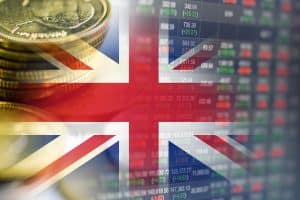UK inflation rate April 2025: Surprising but Hopeful Shift


As April 2025 unfolds, the UK inflation rate continues to draw attention from analysts and everyday citizens alike.
With economic shifts, fluctuating prices, and political decisions shaping the financial landscape, understanding what’s really going on isn’t just useful, it’s essential.
If you’re wondering how these changes might affect your day-to-day expenses or future plans, you’re not alone. Let’s break it down.
Understanding the UK inflation rate and its impact on your financial decisions
Understanding the UK inflation rate is essential for navigating today’s complex economic environment.
It affects not only national policy but also your everyday spending, savings, and future investments. As the cost of living fluctuates, being informed about how and why inflation changes can help you plan more effectively.
In April 2025, the UK inflation rate stood at 3.4 percent, reflecting a slight decrease from March’s 3.8 percent.
Although this indicates a slow downward trend, prices remain elevated in several key areas, especially food and housing. This reinforces the importance of monitoring inflation and understanding its broader implications.
What is inflation and how is it measured in the UK?
Inflation refers to the rate at which the general price level for goods and services increases over time. When inflation rises, the purchasing power of your money decreases, meaning each pound buys less.
The UK primarily uses the Consumer Price Index (CPI) to track inflation. This index monitors price changes across a range of everyday items including food, fuel, housing, and clothing.
The UK inflation rate reflects the percentage change in this index year over year. For example, a 3.4 percent inflation rate in April means that on average, prices were 3.4 percent higher than in April the year before.
Key trends influencing the UK inflation rate April 2025
Supply chain instability still affects prices
While global supply chain pressures have eased since the pandemic, the UK continues to experience disruptions in sectors like agriculture, energy, and imported consumer goods.
Limited supply leads to higher costs, particularly in food and construction materials. These constraints remain a key force behind the current UK inflation rate.
Rising wages contribute to inflation
Wage growth has been strong, especially in the public sector. Average wages have increased by 5.1 percent compared to the previous year.
This rise supports consumer spending but also raises operational costs for employers. As companies adjust their pricing to maintain profitability, it fuels price growth in many areas of the economy.
Energy and housing remain significant cost drivers
Though energy inflation has moderated since its 2022 peak, electricity and gas prices are still well above pre-pandemic levels.
Additionally, rent and mortgage costs continue to rise, placing more pressure on household budgets and pushing the UK inflation rate upward.
Why understanding the UK inflation rate matters to you
Having a solid understanding of the UK inflation rate helps you make better personal finance decisions. It plays a direct role in:
- Budgeting and daily expenses: Knowing which sectors are experiencing higher inflation allows you to anticipate price hikes and adjust your spending accordingly.
- Saving and investing: If the interest you earn on savings is lower than the inflation rate, the real value of your money declines. This makes it crucial to consider options like inflation-linked bonds or diversified investments.
- Borrowing and debt: Inflation affects interest rates on mortgages and personal loans. When inflation is high, the Bank of England may raise base rates, making borrowing more expensive.
The UK inflation rate in historical context
Looking at inflation historically reveals how economic cycles impact prices. For instance, inflation surged past 11 percent in late 2022 before slowly easing.
The gradual decline seen in 2025 reflects both government intervention and global market adjustments. By studying these patterns, consumers and policymakers alike can anticipate future economic conditions and prepare accordingly.
In summary, understanding the UK inflation rate is not just about following economic news. It equips you with the knowledge to respond smartly to price changes, protect your financial well-being, and plan for the future with greater confidence.
Key factors influencing the UK inflation rate April 2025
The UK inflation rate April 2025 is shaped by a range of interrelated forces that continue to impact the economy in both visible and subtle ways.
While the current rate of 3.4 percent represents a slight decline from previous months, inflationary pressures remain present in critical sectors.
Understanding these underlying drivers helps individuals and businesses prepare for what lies ahead.
Supply chain disruptions continue to affect key sectors
Supply chains remain a major influence on the UK inflation rate, even as some global bottlenecks begin to ease. In April 2025, certain goods are still affected by limited availability, leading to price increases at both wholesale and retail levels.
Delays in shipping, increased freight costs, and raw material shortages continue to disrupt the flow of goods across borders.
Agricultural imports and electronics, in particular, have seen persistent delays, raising consumer prices and contributing to inflation.
Food inflation, though easing slightly, remains elevated due to agricultural disruptions and volatile commodity prices. These factors combine to make basic items more expensive for households across the UK.
Rising wages drive up consumer demand and production costs
Wage growth is another significant contributor to the current UK inflation rate. Average earnings in the UK rose by 5.1 percent over the past year, especially in the public sector.
While this benefits workers by improving their ability to manage higher costs, it also increases operational expenses for businesses.
When companies pay higher wages, they often compensate by raising the prices of goods and services. This wage-price dynamic reinforces inflation, particularly in sectors such as retail, hospitality, and health services.
Moreover, greater disposable income among consumers can lead to increased demand for goods, putting further pressure on prices and sustaining inflationary momentum.
Energy prices and housing costs remain influential
Energy continues to play a pivotal role in shaping the UK inflation rate April 2025. Although wholesale gas and electricity prices have come down from the peaks seen in 2022, they remain high by historical standards.
This keeps household energy bills elevated and adds cost pressure across industries that rely heavily on energy for production and logistics.
In parallel, the UK housing market is contributing to inflation. Rising rent prices and mortgage interest payments are stretching household budgets, especially in urban areas.
These housing-related expenses feed directly into the Consumer Price Index and help sustain the broader inflation rate.
Fiscal and monetary policies guide inflation management
Government policy also plays a decisive role in influencing the UK inflation rate. Both fiscal and monetary actions determine how money circulates through the economy and how quickly inflation is brought under control.
Central bank strategies to contain inflation
The Bank of England has maintained its base interest rate at 5.25 percent, aiming to cool down inflation without stalling economic growth.
By keeping borrowing costs high, the Bank encourages consumers and businesses to reduce spending, which can help slow down price increases over time.
Interest rate decisions directly impact loan repayments, mortgages, and credit card debt. This makes them a powerful tool in managing inflation, though they can also affect economic activity and job creation.
Government spending and taxation
Public spending continues to influence inflation dynamics.
Recent government programs supporting energy bills and transport infrastructure have injected money into the economy, which may help stabilize certain sectors but can also add to inflationary pressure if not carefully managed.
Tax policies also play a role. Adjustments to income tax thresholds, VAT, or fuel duties affect consumer spending power and overall demand, which in turn impact the UK inflation rate.
By understanding how supply disruptions, wage growth, energy costs, and government policies intertwine, we gain a clearer view of the forces behind the UK inflation rate April 2025.
Staying aware of these factors not only improves financial literacy but also helps individuals and businesses make more informed choices during uncertain economic times.
Historical context of inflation in the UK

Understanding the historical behavior of the UK inflation rate is essential to interpreting today’s economic trends.
By exploring how inflation has fluctuated across different decades, we can identify patterns, policy impacts and external shocks that continue to influence the economy today.
While the UK inflation rate April 2025 currently sits at 3.4 percent, that number gains deeper meaning when placed within a broader historical framework.
Inflation through the decades in the UK
The 1970s: Stagflation takes hold
During the 1970s, the UK experienced a turbulent period known as stagflation, marked by high inflation, slow economic growth and rising unemployment.
A global oil crisis and weak monetary controls caused inflation to soar past 20 percent by the mid-decade, eroding the value of wages and savings.
The 1980s: Policy intervention and a peak over 18 percent
In the early 1980s, the UK inflation rate once again surged above 18 percent, prompting strong government intervention.
The Bank of England introduced strict interest rate hikes, which helped reduce inflation but led to a deep recession. This period highlighted the difficult balance between curbing inflation and maintaining economic growth.
The 1990s: Return to stability
After the volatility of the previous decades, the 1990s brought relative price stability.
Inflation hovered between 2 and 4 percent, supported by more consistent monetary policy and the formal introduction of inflation targeting by the Bank of England in 1992.
Post-2008 to 2020: Recovery and low inflation
Following the global financial crisis of 2008, the UK experienced a prolonged period of low inflation, aided by low interest rates and sluggish demand.
From 2015 to 2019, the UK inflation rate averaged around 2 percent, aligning with the central bank’s target.
Post-2020: A sharp resurgence
After 2020, inflation spiked again, driven by global supply chain disruptions, soaring energy prices, and the economic fallout of the COVID-19 pandemic.
By October 2022, inflation peaked above 11 percent, its highest level in over 40 years. This surge led to major adjustments in interest rates and fiscal policies.
These historical patterns show that inflation is cyclical and responsive to both global and domestic pressures. They also demonstrate how quickly the UK inflation rate can accelerate in response to unforeseen shocks.
The role of economic policies in shaping inflation
Central bank decisions
The Bank of England has consistently played a key role in controlling the UK inflation rate through interest rate adjustments and monetary policy tools.
Whether combating double-digit inflation in the 1980s or stimulating growth after 2008, these interventions directly affect inflationary pressure.
In 2025, the Bank continues to maintain the base interest rate at 5.25 percent, balancing the goal of lowering inflation without derailing growth.
Government fiscal actions
Public spending, tax reforms and subsidy programs have also influenced historical inflation trends.
Policies such as energy support payments in recent years have aimed to cushion the impact of high prices without triggering excessive demand that would worsen inflation.
Understanding how government actions affect the UK inflation rate offers valuable context for interpreting economic data and anticipating policy responses in the months ahead.
Recent inflation trends and their lasting effects
The last few years have illustrated how external events can rapidly influence inflation. The pandemic and geopolitical tensions led to supply shortages, pushing prices higher across multiple sectors.
- Energy prices became a dominant inflation driver, with household bills doubling in some areas between 2021 and 2022.
- Food prices remained volatile, influenced by transportation delays and crop failures linked to climate variability.
- Wage growth began rising in response to the cost-of-living crisis, which in turn added pressure to the overall UK inflation rate.
While April 2025 shows signs of moderation, the effects of these past events continue to shape economic behaviors, public expectations, and market confidence.
By studying the historical context of the UK inflation rate, we gain perspective on today’s economic environment.
Past trends remind us that inflation is not a fixed phenomenon but a reflection of complex global and domestic interactions.
With this knowledge, individuals, businesses and policymakers can better navigate current challenges and prepare for future developments.
How the UK inflation rate affects your everyday expenses
The UK inflation rate doesn’t just shape national headlines. It has a direct and often immediate impact on household budgets.
From the price of a loaf of bread to the cost of your monthly rent, rising inflation affects how far your income goes and how much you’re able to save, spend or invest.
In April 2025, even as the UK inflation rate shows signs of easing at 3.4 percent, many families still feel the pressure at the supermarket, at the petrol station and in their utility bills.
Understanding exactly how inflation alters your daily expenses is key to adjusting your financial strategy.
Essentials get more expensive when inflation rises
Food prices continue to challenge households
The most noticeable effect of the UK inflation rate is on basic necessities.
Groceries, especially fresh produce, dairy and meat, have seen persistent price increases over the last two years.
Although inflation has slowed slightly in April, food prices remain high due to transportation costs, energy use in production and global supply instability.
Households are spending more each week on food, even when buying the same items. This forces many to switch to cheaper brands or reduce consumption.
Fuel and energy bills remain elevated
Fuel prices are heavily influenced by global oil markets and geopolitical tensions. Although petrol prices have dropped slightly since their 2022 highs, they are still above average, and any shock to global supply can quickly reverse that trend.
Energy costs, particularly gas and electricity, are also among the top contributors to the current UK inflation rate. Despite government support measures in previous years, many homes continue to face high energy bills that strain their budgets.
Housing costs increase with inflation
The UK inflation rate also affects the cost of housing. Rent prices have climbed steadily, especially in urban centres, driven by higher demand and limited supply.
Mortgage holders, on the other hand, are impacted by rising interest rates, which increase monthly payments for those not on fixed-rate deals.
Higher housing expenses reduce the amount of income available for other essentials, putting additional pressure on low and middle-income households.
Discretionary spending is often the first to shrink
When the cost of living rises due to inflation, consumers tend to reduce non-essential spending. Dining out, vacations, subscriptions and leisure activities are usually the first to be cut.
People are now more likely to:
- Cook meals at home instead of eating out
- Postpone major purchases like electronics or furniture
- Cut back on entertainment and travel expenses
This behavioral shift affects not only individuals but also businesses, particularly in the retail and hospitality sectors, which rely on strong consumer demand.
Inflation quietly erodes savings and future security
One of the less visible but more damaging effects of a rising UK inflation rate is its impact on savings. When inflation is higher than the interest rate on your savings account, your money loses value in real terms.
To protect financial stability during inflationary periods, individuals are turning to alternatives such as:
Inflation-linked bonds
These are structured to grow with inflation, helping preserve the real value of your investment over time.
Stock market investments
Equities, especially in sectors that outpace inflation like technology or energy, can offer better returns than traditional savings.
Real estate
Property is often considered a strong hedge against inflation, particularly when rents increase in line with the inflation rate.
These strategies aim to outpace the UK inflation rate and protect long-term financial well-being, but they also require knowledge and planning.
As the UK inflation rate April 2025 continues to influence every aspect of daily life, from the supermarket aisle to your savings account, it becomes more important than ever to monitor your spending and make proactive financial choices.
Whether it’s budgeting more carefully or shifting your investment approach, understanding how inflation affects everyday expenses empowers you to adapt and protect your purchasing power.
Future predictions: What lies ahead for the UK economy and inflation rate

Forecasting the future of the UK economy involves analyzing key indicators that influence everything from job markets to interest rates.
As the UK inflation rate continues to shape consumer behavior and financial policies, understanding what lies ahead helps individuals and businesses prepare strategically.
In 2025, experts anticipate a period of moderate growth and gradual inflation control, with several opportunities and risks emerging across sectors.
Slower but stable economic growth expected
Analysts predict that the UK economy will maintain a positive trajectory in 2025, although at a slower pace compared to the post-pandemic rebound.
This deceleration is attributed to more cautious consumer spending, tighter monetary conditions, and global uncertainties.
Factors likely to shape this growth include:
- Continued investment in digital infrastructure and AI technologies, which could improve productivity.
- The evolution of post-Brexit trade agreements, which may create both hurdles and openings for UK exporters.
- Consumer confidence, which remains fragile due to high living costs and interest rates.
Despite the slower momentum, specific sectors are expected to outperform. Green energy, biotech, and advanced manufacturing are poised to drive new job creation and innovation.
Inflation outlook: A gradual return to target levels
The UK inflation rate April 2025 has eased to 3.4 percent, showing the first signs of meaningful decline since its peak above 11 percent in 2022.
Economists expect further reductions throughout the year as supply chain pressures subside and monetary tightening takes effect.
The Bank of England is likely to hold interest rates steady at 5.25 percent in the short term. This cautious stance aims to suppress lingering inflation without stifling growth.
Wage growth and global oil prices remain key variables.
Rising salaries help households cope with inflation but can also prolong it if not matched by productivity gains. Similarly, geopolitical shocks or energy shortages could push fuel prices up, creating new inflationary pressures.
Staying alert to these factors is crucial to interpreting the future path of the UK inflation rate.
Shifting job market and evolving wage dynamics
The UK labor market continues to adapt to structural changes. Remote work, automation, and industry transformation are reshaping employment patterns. While some traditional sectors are contracting, others are expanding rapidly.
Key trends expected in 2025 include:
Increased demand in technology and healthcare
As digital transformation accelerates, skills in data analysis, cybersecurity, AI and healthcare are among the most in-demand. These sectors are expected to offer strong employment growth and competitive salaries.
Greater wage competition
Businesses are under pressure to offer better compensation packages to attract skilled talent. This dynamic may push average wages higher, which can, in turn, affect the UK inflation rate if not matched by economic productivity.
Emphasis on retraining and upskilling
To remain competitive in a changing job market, workers will need access to training programs and vocational education. Government incentives and private initiatives are likely to expand in this area.
Investment opportunities in a transitioning economy
Investors looking ahead are focusing on sectors resilient to inflation and aligned with long-term growth trends. With the UK inflation rate gradually stabilizing, now may be a key time to explore strategic investments.
Green energy and sustainability
Startups and large firms in renewable energy, electric vehicles, and sustainable infrastructure are gaining momentum. These sectors benefit from government support and global environmental goals.
Real estate and housing
Despite higher borrowing costs, the housing market remains active in several regions. Rental properties, especially in cities with growing student or remote worker populations, continue to attract investors.
Stocks and inflation-hedged assets
Equities in tech, healthcare and consumer staples may outperform in this environment. Inflation-linked bonds also remain attractive for those seeking protection from price erosion.
Diversification and careful risk analysis remain essential, especially as interest rates and the UK inflation rate continue to influence asset performance.
By understanding future economic trends and how they relate to the UK inflation rate, individuals and businesses can position themselves to thrive, not just adapt.
Whether it’s planning a career path, revising an investment portfolio or forecasting business strategy, anticipating what’s ahead gives you a clear advantage in a constantly shifting economic landscape.
Final thoughts: What the April 2025 inflation rate means for you
The UK inflation rate April 2025 serves as a pivotal indicator of where the British economy stands, and where it’s heading.
While there’s cautious optimism with the CPI falling slightly to 3.4%, this number still reflects ongoing pressure on household budgets, driven by elevated food prices, energy bills, and wage-related cost increases.
Understanding the UK inflation rate allows individuals and businesses alike to anticipate changes and adapt.
Whether you’re managing personal finances, adjusting pricing strategies, or planning investments, staying informed about inflation trends is no longer optional, it’s essential.
For consumers, the UK inflation rate directly affects how far your money goes. Higher prices on everyday essentials and reduced purchasing power mean you must plan your spending more carefully.
Knowing where inflation is easing—and where it’s still rising—can help you make smarter decisions.
For investors and savers, monitoring the UK inflation rate April helps determine how best to protect wealth.
Inflation-sensitive sectors, real estate, and inflation-linked bonds offer possible strategies, but only with a clear understanding of market signals and risk tolerance.
And for policy watchers or business leaders, the inflation data provides insight into broader economic health.
Is consumer demand returning? Will interest rates shift soon? These are questions answered in part by understanding the UK inflation rate and its components.
As we move deeper into 2025, it’s clear that inflation remains one of the most closely watched metrics in the UK economy.
To keep track of reliable updates and detailed breakdowns, consult official sources like the ONS April 2025 report and the BBC’s latest coverage.
By staying engaged and informed, you’ll be better prepared to navigate the shifting financial landscape shaped by the UK inflation rate.
FAQ – Questions about the UK inflation rate and its effects
What is the current UK inflation rate?
The current UK inflation rate varies but has shown recent increases due to supply chain issues and rising costs.
How does inflation affect my daily expenses?
Inflation raises the prices of goods and services, which means you may need to spend more on everyday items like groceries and gas.
What can I do to manage my budget during inflation?
You can adjust your budget by prioritizing essential expenses, reducing non-essential spending, and exploring cost-effective alternatives.
Are there investment opportunities during inflation?
Yes, sectors like technology and renewable energy may offer good investment opportunities, as they can provide better returns despite inflation.
Liked the article?





